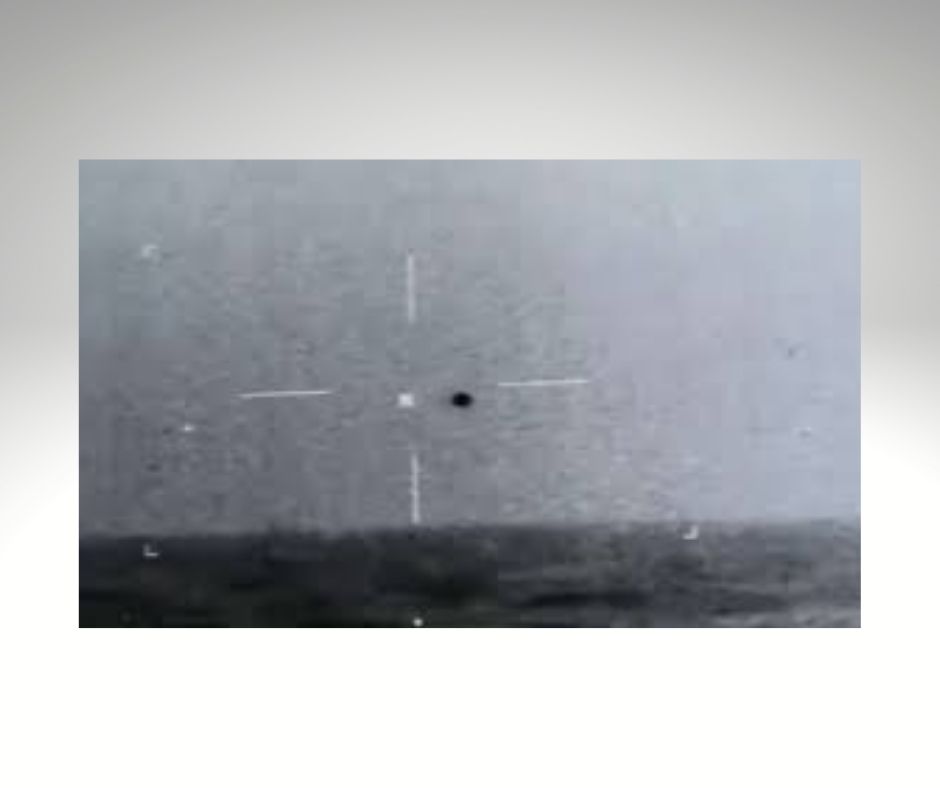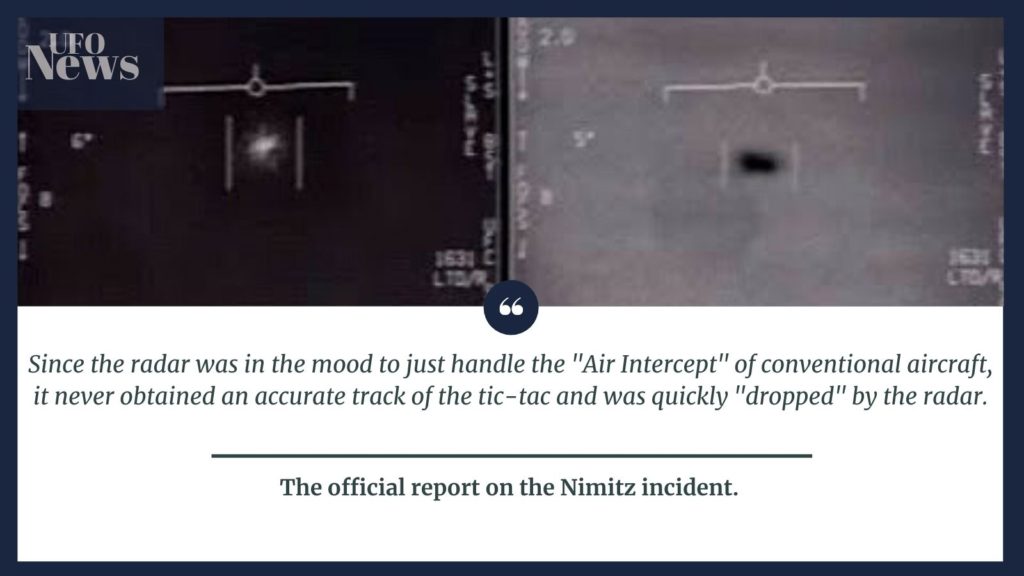So what are those UAPs? Are they advanced drones from Russia or China? Maybe the “terrestrial drones” are part of what’s going on.
Are the USA’s most advanced military systems being exposed and analyzed? Is the U.S. being spied on with balloons and advanced drones?
Maybe, but it doesn’t answer what you have heard on the 60 minutes program recently.
It isn’t so much of what those Navy videos show, but what the Navy F-18 pilots (Commander Fravor and Alex Dietrich) said they encountered back in 2004.
Fravor stated how the tic-tac UAP moved, the incredible speed, and the darting fashion. How it flew up towards his F-18 fighter jet, and later, in front of him, it took off faster than the eye can see.

Can a drone do that back in 2004? Maybe it was a drone, but then it must be of extremely high technology of propulsion and structure.
But nobody has ever seen any rotor blades or exhaust on this thing. Furthermore, the fact that several pilots have seen these UAPs “dematerialize” and become invisible to the naked eye but remain visible on FLIR.
What country has that technology? Russia and China would love to be able to spy on U.S. Navy exercises and probably do.
But there are some properties of the UAP exhibit that can not be explained. Therefore, it’s looking more and more toward the UFO report named “Others.”
What are your thoughts? Drones from Russia and China or Aliens?

The capability of our military to produce balloons that appear to have extreme capabilities like projecting I.R. and swarm effect to make it appear these are moving at excessive velocity.
Still, it’s a stretch to say an adversary is doing this inside an exercise zone without being detected.
But no technology today can perform maneuvers like those described by the Navy pilots described in the 60 minutes program.
The G forces would disable the function of electronics inside those crafts. Zero to 80K feet in 1 second that’s more than 15 miles per second and a complete stop.
Moreover, remember escape velocity on earth is 7 miles per second. Indeed, there are explanations.
They just are beyond our known technological ability at this time. Thus there are signs that there is something to the fact that these UAPs are very interested in the U.S. armed forces and the navy in particular.
However, if they are E.T. in origin, our forces would be of little concern to species capable of faster than light travel except for a science type of study like archeology.
Has Russia or China designed the most technically superior drones?

If they did, they are capable of these things:
Flying at ~20MPH for over 3 hours, in a windy environment, reach altitudes of over 1K feet, with the ability to silently hover and dart around (which implies a helicopter-type propulsion system) powering bright lights, communications systems, and multi-spectrum sensors.
The battery capacity to meet these capabilities must be both enormous and out-of-this-work efficient.
Able to track U.S. warships over multiple nights implies active control but without the U.S. Navy’s most powerful destroyers able to discern the location of that control.
They might achieve this via a Chinese sub releasing them and hiding in the depths, but without the U.S. Navy’s most powerful acoustic platforms able to pick up any communications between the submarine and its fleet of drones.
But remember, balloons and drones are not transmedium vehicles. They don’t travel through space, air, and water, they don’t travel hundreds of meters underwater and then go in the air, and they indeed don’t fly circles around fighter jets like they are paper airplanes. And they also don’t drop 80,000 feet to 50 feet in less than a second.
UAPs can not hide

The tic-tac descended “very rapidly” from about 60,000 feet down to about 50 feet in a matter of seconds.
But since the radar was in the mood to just handle the “Air Intercept” of conventional aircraft, it never obtained an accurate track of the tic-tac and was quickly “dropped” by the radar.
If the radar were set up in the mode for “Ballistic Missile Tracking,” they likely would have had the capability to track the tic-tac. What are your thoughts?
More sensitive and capable radars will equip the U.S. Navy’s new and some of its older warships.
The U.S. Army is revitalizing its surface-to-air sensor systems, including gallium nitride-based AESA arrays.

Navy and Air Force fighters will soon be flying with advanced infrared search and track pods, giving them a passive form of long-range detection and yet another sensor to bring to bear on low radar cross-section UAP contacts.
Moreover, the U.S. Air Force is building new sensing layers in space, especially ones that can detect and track hypersonic missiles careening through the atmosphere at extreme speeds.

U.S. Space Force is contracting out various telescopes to track objects in orbit optically and detect suspicious changes in those objects’ activity.
New artificial intelligence (A.I.) enabled software will automatically detect and monitor strange targets on all types of sensors easier than ever before.
The massive Long Range Discrimination Radar in Clear, Alaska, will provide radar data of an unprecedented fidelity over a vast area—it’s capable of reliably verifying ballistic missile countermeasures and decoys from reentry vehicles.
This will increase the data set on UAP/UFO events and will make many more people aware of this unique drone problem, which could make it much harder to keep under wraps.
What are your thoughts?